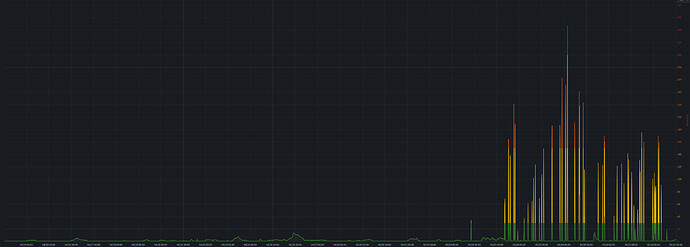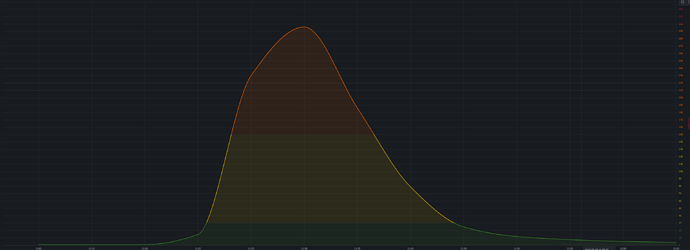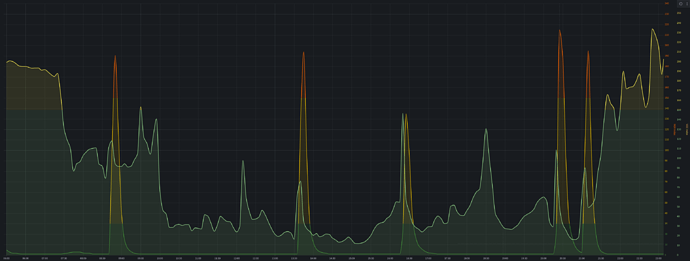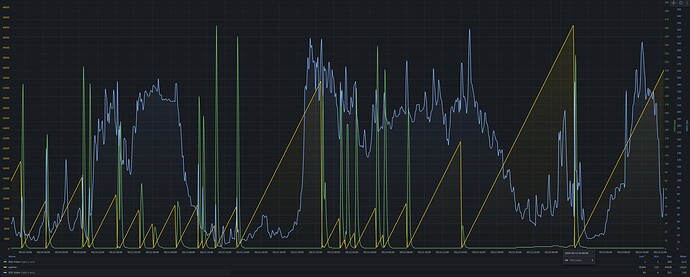As of couple weeks ago I have started seeing NOx Index on my outdoors sensor spike in a weird short-lived pattern as seen in the graph herein:
I’m living on the outskirts of a city and there isn’t/shouldn’t be much vehicle traffic nearby. There isn’t any significant industrial activity within some 20km radius of me either. Each event lasts less than an hour. Here’s one example zoomed in:
Spikes like these don’t appear to have any particular time-based pattern – some events happen at 2am, some at noon, some around the time the work day wraps up.
The spikes appear to correlate with the VOC index:
Has anybody ever seen anything like this? Any thoughts what could be the cause here? Sensor gone faulty, some weird natural phenomenon or perhaps it is indeed wind bringing something from some industrial thing from far away?
(Likely not relevant but I’m using ESPHome-based firmware, but it hasn’t seen updates for quite some time.)




